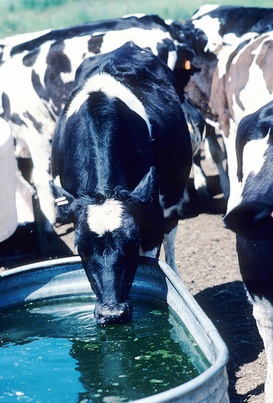Spanning most of southeastern Texas, the Yegua-Jackson Aquifer serves thirty-five counties, including Houston, Webb, Star, and Zapata. Its water is used primarily for livestock, farming and residential consumption, though it also serves a variety of municipal, industrial, and agricultural purposes. It is composed of interbedded layers of clay, sand, and silt, much of which were originally deposited through erosion. Although these layers existed for millennia, they have only recently come to be considered a single aquifer, thanks to a recent decision by the Texas Water Development Board to classify the Yegua and Jackson areas as contiguous.
Due to the high levels of sediment in this aquifer, water quality varies wildly from site to site, with some wells offering highly mineralized water that must be treated before consumption. In particular, the aquifer's water contains high levels of sulfides, which can cause diarrhea and other negative health effects if consumed in excess. The water contains large amounts of chloride, which kill germs, but can also cause organ damage if consumed in large quantities. There are also high levels of total dissolved solids, which can make the water appear less clean, though they are not usually harmful if consumed. The water also contains manganese, the health effects of which are not yet understood.
The Yegua-Jackson Aquifer has not suffered from water shortages to the same degree as other aquifers in the state, and has been able to provide water at a consistent, though low, level. Concerns over the water's salinity has led the state to promote desalination in the area as part of its 2007 Water Plan. At present, there are nearly 1,500 wells that use this aquifer. Most of these wells have low productivity, extracting less than fifty gallons per minute, though some can extract as much as five hundred gallons per minute.
Drilling Techniques
Many of the wells in this aquifer use kelly drives. This device consists of a three-, six-, or eight-sided pipe attached to a mechanical apparatus, called a kelly bushing, on one end and a rotary drill bit on the other. The kelly bushing rotates the pipe, allowing the drill to move vertically into the well and extract water, oil, or natural gas. These devices are usually outfitted with drum brakes and wire rope control systems, which allow the drillers to control the amount of pressure that is being placed on the drill bit.
Interested in drilling in the Yegua-Jackson Aquifer? Talon LPE Drilling offers safe, environmentally-friendly drilling services for a wide range of environments. Our techniques include air rotary drilling, soil boring, hollow steam augur drilling, and mud rotary drilling. We also provide containment, recovery, and well monitoring services. To learn more, visit our website today!

